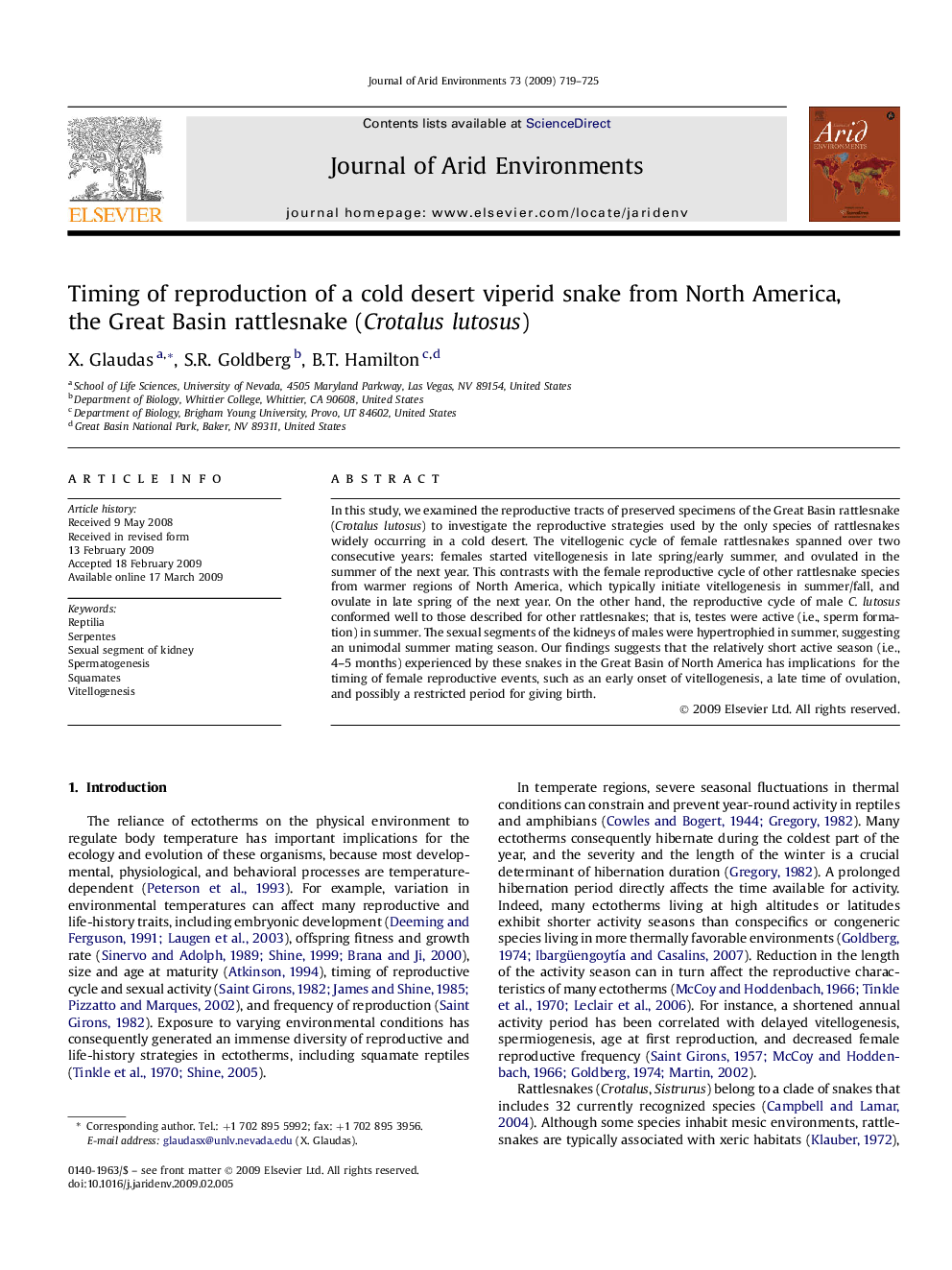| Article ID | Journal | Published Year | Pages | File Type |
|---|---|---|---|---|
| 4394363 | Journal of Arid Environments | 2009 | 7 Pages |
In this study, we examined the reproductive tracts of preserved specimens of the Great Basin rattlesnake (Crotalus lutosus) to investigate the reproductive strategies used by the only species of rattlesnakes widely occurring in a cold desert. The vitellogenic cycle of female rattlesnakes spanned over two consecutive years: females started vitellogenesis in late spring/early summer, and ovulated in the summer of the next year. This contrasts with the female reproductive cycle of other rattlesnake species from warmer regions of North America, which typically initiate vitellogenesis in summer/fall, and ovulate in late spring of the next year. On the other hand, the reproductive cycle of male C. lutosus conformed well to those described for other rattlesnakes; that is, testes were active (i.e., sperm formation) in summer. The sexual segments of the kidneys of males were hypertrophied in summer, suggesting an unimodal summer mating season. Our findings suggests that the relatively short active season (i.e., 4–5 months) experienced by these snakes in the Great Basin of North America has implications for the timing of female reproductive events, such as an early onset of vitellogenesis, a late time of ovulation, and possibly a restricted period for giving birth.
